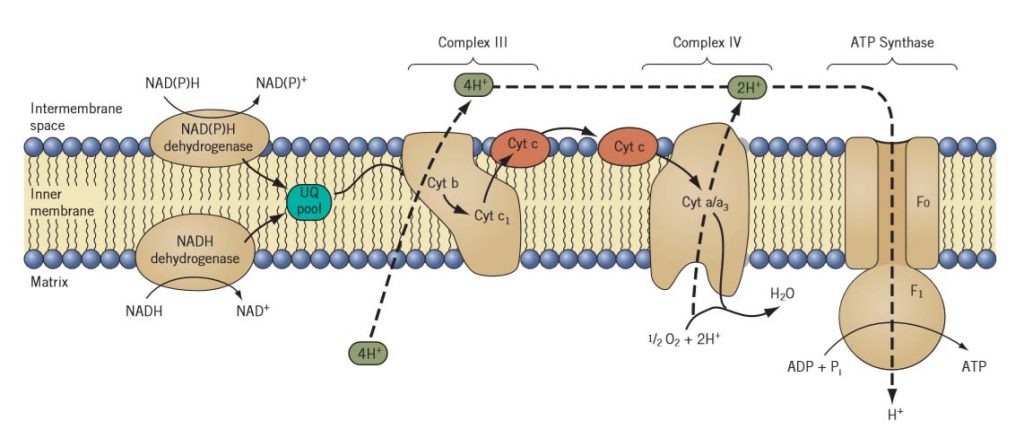The electron transport chain described above is shared in essentially the same form by virtually all organisms plants, animals and microorganisms. Plant mitochondria contain, in addition, several other redox enzymes, atleast two of which are unique to plants.
These enzymes have been discovered largely by virtue of their insensitivity to certain classic inhibitors of electron transport.
PLANT MITOCHONDRIA CONTAIN EXTERNAL DEHYDROGENASES
Unlike animal mitochondria, plant mitochondria contain‘‘external’’dehydrogenases that face the intermembrane space and are capable of oxidizing cytosolic NADH and NADPH respectively. As a consequence, electrons from the oxidation of either cytosolic NADH or NADPH are donated directly to the ubiquinone pool. Because the external dehydrogenase enzymes do not span the membrane, they will not translocate protons as Complex I does. Consequently, only two ATP can be formed from the transfer of each pair of electrons to oxygen.

Fig: Alternative electron transport pathways in plant mitochondria. Electrons entering the chain through the alternative dehydrogenases will pass through two phosphorylating sites rather than three.